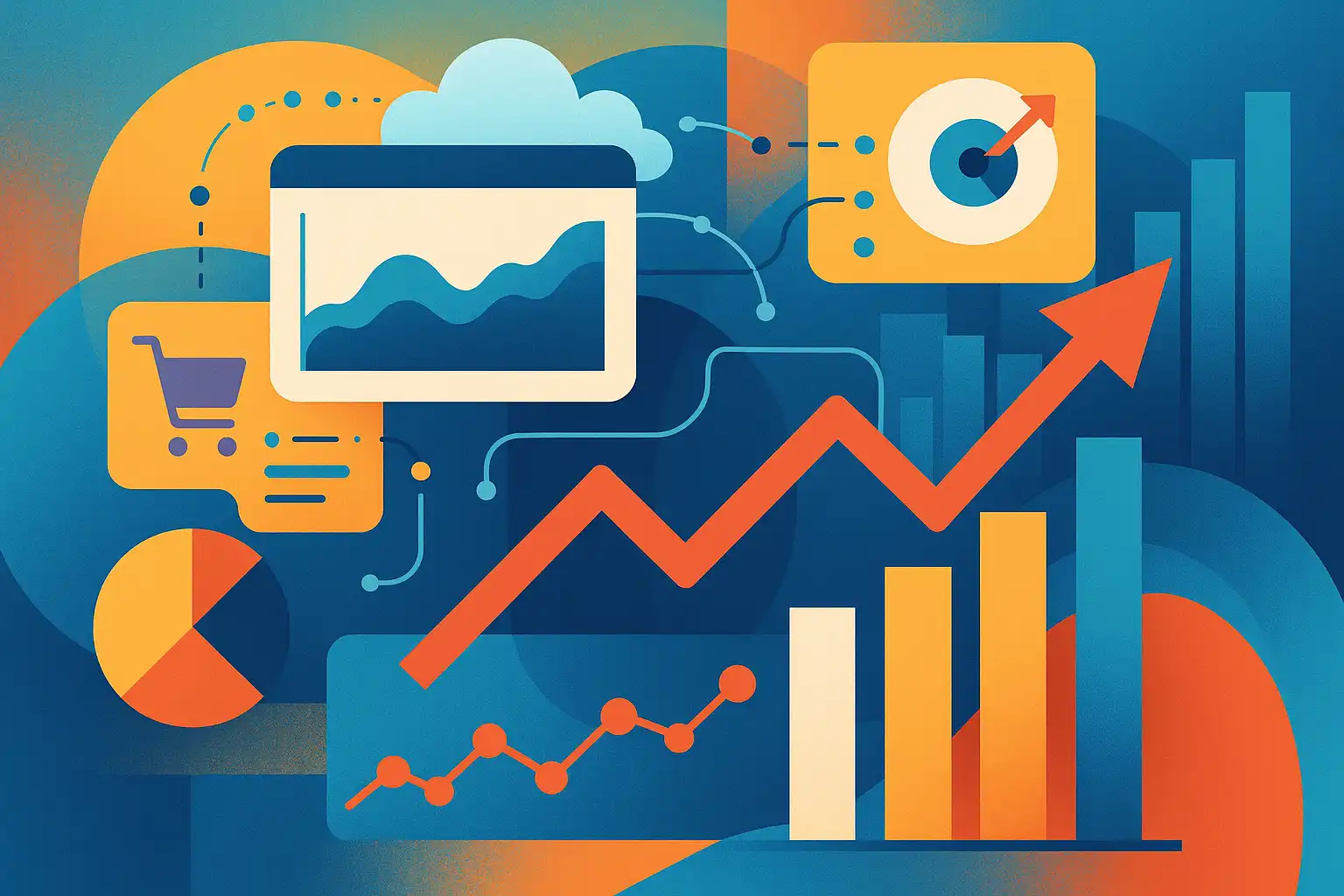
Data analytics for small companies has become a powerful lever for growth, helping businesses of all sizes make more informed decisions. By turning daily information into actionable insights, even the smallest companies can compete more effectively, spot new opportunities, and use resources more efficiently. With user-friendly tools and clear processes, small businesses can harness analytics to understand what works, what doesn’t, and how to grow smarter—one step at a time.
How can small companies use data analytics to find new growth opportunities?
Small companies often wonder how data analytics can reveal paths to growth that might otherwise remain hidden. The core value lies in collecting and analyzing information from key business areas—marketing, sales, finance, and customer behavior. For example, by examining marketing data, a business can identify which campaigns attract the most traffic and generate the best leads. This helps focus efforts and budgets on what delivers real results.
When it comes to financial and sales data, analytics uncovers trends in product performance, seasonal buying habits, and shifting customer preferences. These insights highlight high-performing products and point to under-served market gaps. Another essential area is customer behavior. Understanding how customers interact with your website, store, or services makes it possible to personalize offerings and improve satisfaction. With the right approach, analytics can even segment customers based on their journey, allowing you to tailor messages or deals to each group for better results.
As a result, data-driven insights give small companies the edge to spot trends early, adjust offerings, and serve unmet needs. If you want to learn about aligning analytics with your business vision, reviewing a data strategy alignment with business goals resource offers valuable direction for strategic planning.

What are the best data analytics tools for small companies?
Choosing the right tools is crucial for small businesses starting their analytics journey. Luckily, there are many affordable options that don’t require specialized IT knowledge. Google Analytics is one of the most accessible tools, offering insights into website traffic, user behavior, and online campaign performance. This helps companies boost their online presence and attract the right customers.
Tableau is another strong option, providing data visualization and business analytics in a user-friendly package. Many small companies start with Tableau because it scales well as their needs grow. HubSpot Marketing Analytics brings a closer view of marketing efforts, offering reports on lead generation, conversions, and campaign reach. Tools like Zoho integrate with customer relationship management (CRM) to centralize sales and customer data for deeper analysis. QuickBooks, an accounting tool, offers financial analytics to monitor business health easily.
Most of these solutions are cloud-based, which means they are cost-effective and simple to implement. By exploring the step-by-step process in a data science workflow guide, even small teams can make sense of complex information with ease.

How do small companies get started with data-driven decisions?
The key to success with data analytics for small companies is to start small, focus on essentials, and build from there. First, identify the specific goals that matter for your business, such as increasing sales, improving customer retention, or reducing costs. Next, define key performance indicators (KPIs) aligned with those goals—think website visits, sales per week, or average customer value.
Once goals are set, decide which data sources to use. This can include point-of-sale receipts, website analytics, customer surveys, or industry benchmarks. The most important step is collecting good-quality, relevant information. After collecting data, use analytics tools to process and visualize the results. Simple charts, graphs, or dashboards can make trends clear at a glance.
It can be helpful to create a simple routine for reviewing insights and acting on them—perhaps a monthly check-in to discuss what the data reveals. As you grow, consider collaborating with experts or using a data science service that understands the challenges and needs of small organizations.
Simple steps for data-driven decisions
- Set clear business goals (e.g., boost revenue, lower expenses).
- Identify relevant KPIs to track progress.
- Choose reliable data sources (sales, CRM, website, etc.).
- Collect and clean your data to ensure accuracy.
- Use analytics tools to spot trends or issues.
- Take action based on your findings.
- Review progress and adjust strategies as needed.
What are the main benefits and challenges of data analytics for small companies?
Embracing analytics brings several clear benefits. First, small companies gain a better understanding of their customers, products, and operations. This knowledge leads to more targeted marketing, improved customer service, and smarter spending. Another benefit is agility—data-driven businesses can react to changes faster, whether it’s a shift in demand, new competition, or changes in buying habits.
Despite these rewards, there are challenges to overcome, especially for teams with limited budgets or technical expertise. Some of the main hurdles include ensuring data quality, finding the right tools, and training staff to interpret results accurately. Outsourcing or consulting with experts, such as data mining consultants for growth, is one practical way to bridge skills gaps and extract more value from your data.
Advantages of using data analytics in small businesses
- Improved decision-making based on facts, not guesses.
- Cost savings by spotting inefficiencies.
- Enhanced customer targeting and retention.
- Faster response to market changes.
- Clear tracking of business performance over time.
Challenges small companies often face
- Limited budgets for software and tools.
- Shortage of trained staff or expertise.
- Difficulty integrating data from different sources.
- Ensuring ongoing data privacy and security.
How can affordable analytics tools fuel smarter growth?
Affordable analytics tools open the door for small companies to compete with larger businesses. They turn raw numbers into practical insights without the need for expensive systems or large IT teams. Cloud-based solutions, in particular, offer flexible pricing while cutting costs on hardware and maintenance.
Many small businesses start with free or low-cost versions of analytics software, gaining familiarity before upgrading to advanced features. Training resources and user communities for tools like Google Analytics or Tableau make it easier to get started and solve common issues. Leveraging these solutions allows small companies to measure what matters and act faster, ensuring every decision is backed by reliable information.
Over time, consistent use of analytics supports a culture where everyone—from owners to staff—understands the value of data. This culture shift can lead to more collaboration, creativity, and sustained growth, especially when combined with strategic planning and an openness to learn from both success and failure.
FAQ: Data Analytics for Small Companies
Q1: Why is data analytics important for small companies?
A: Data analytics helps small businesses make better decisions by identifying trends, tracking performance, and uncovering new opportunities. It allows owners to use limited resources more effectively, respond quickly to changes, and build stronger customer relationships—all of which fuel sustainable growth.
Q2: What types of data should small companies analyze?
A: Key areas include sales numbers, customer behavior, marketing campaign results, website analytics, and financial performance. Analyzing this information helps spot patterns, pinpoint weak spots, and reveal what drives the business forward.
Q3: How can companies on a tight budget adopt data analytics?
A: Start with free or low-cost tools and focus on the most important metrics. Many analytics platforms offer beginner-friendly features, online tutorials, and flexible plans designed for small teams. If needed, seek guidance from professionals or use community forums.
Q4: Where can I learn more about using analytics in business?
A: For in-depth insights and step-by-step roadmaps, consider exploring resources like a data science workflow guide or materials focused on strategy and consulting, which can accelerate your analytics journey.
